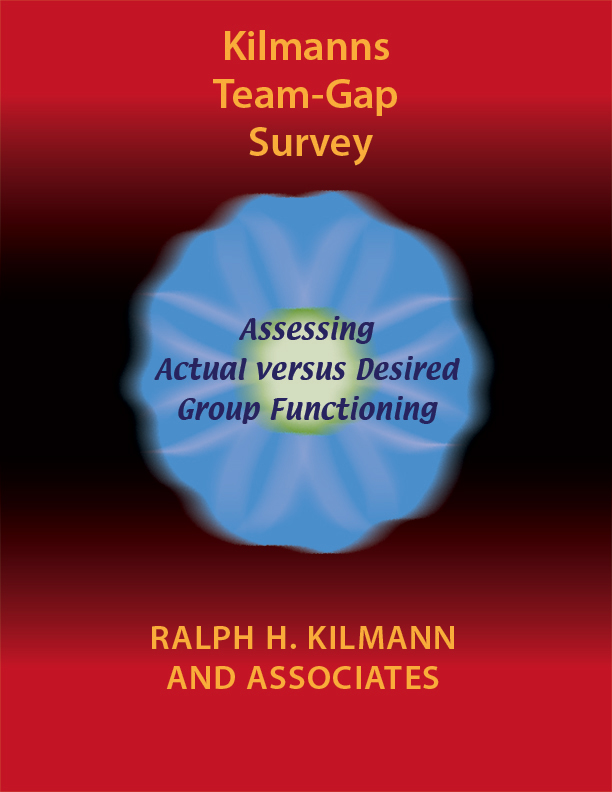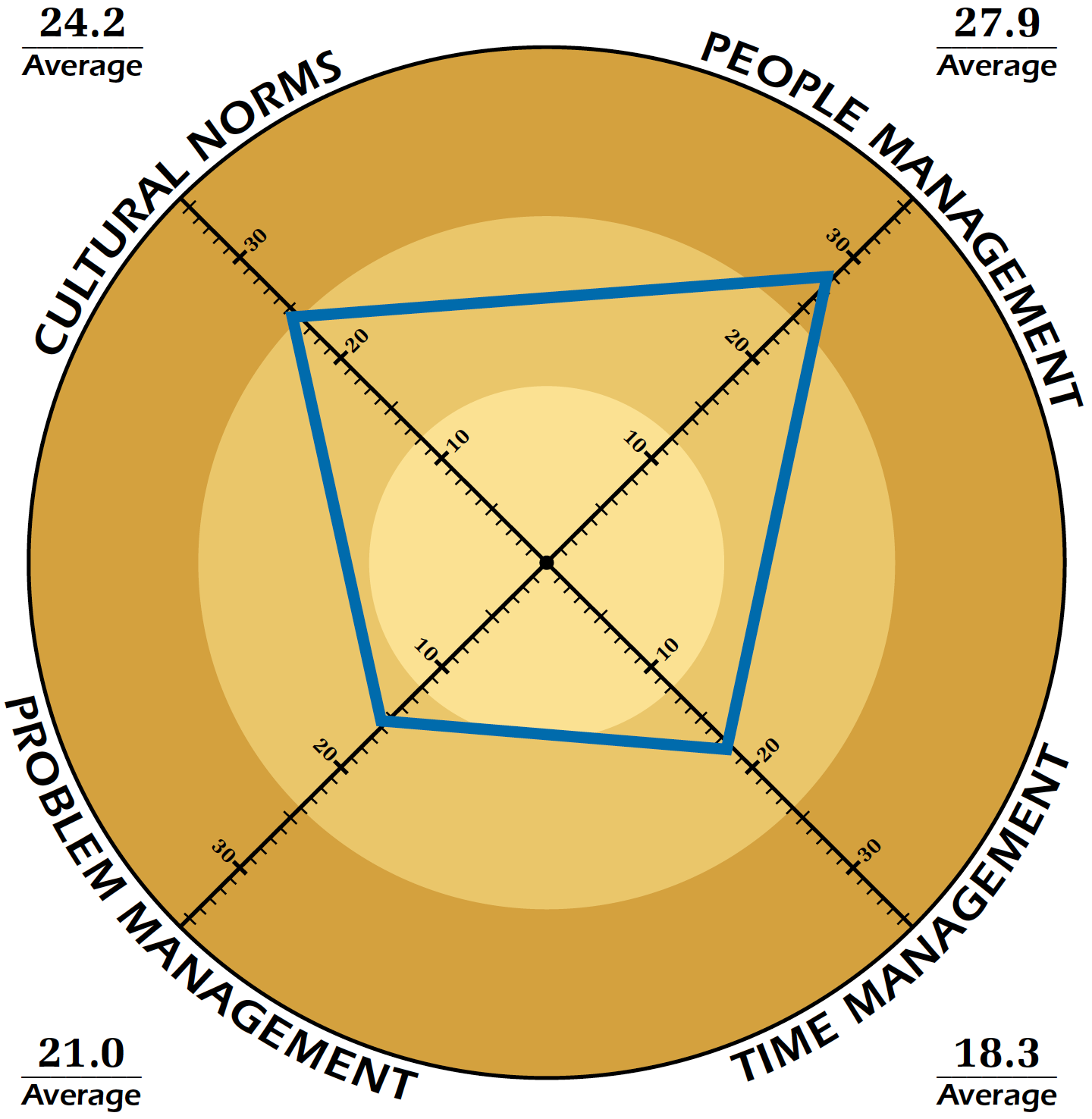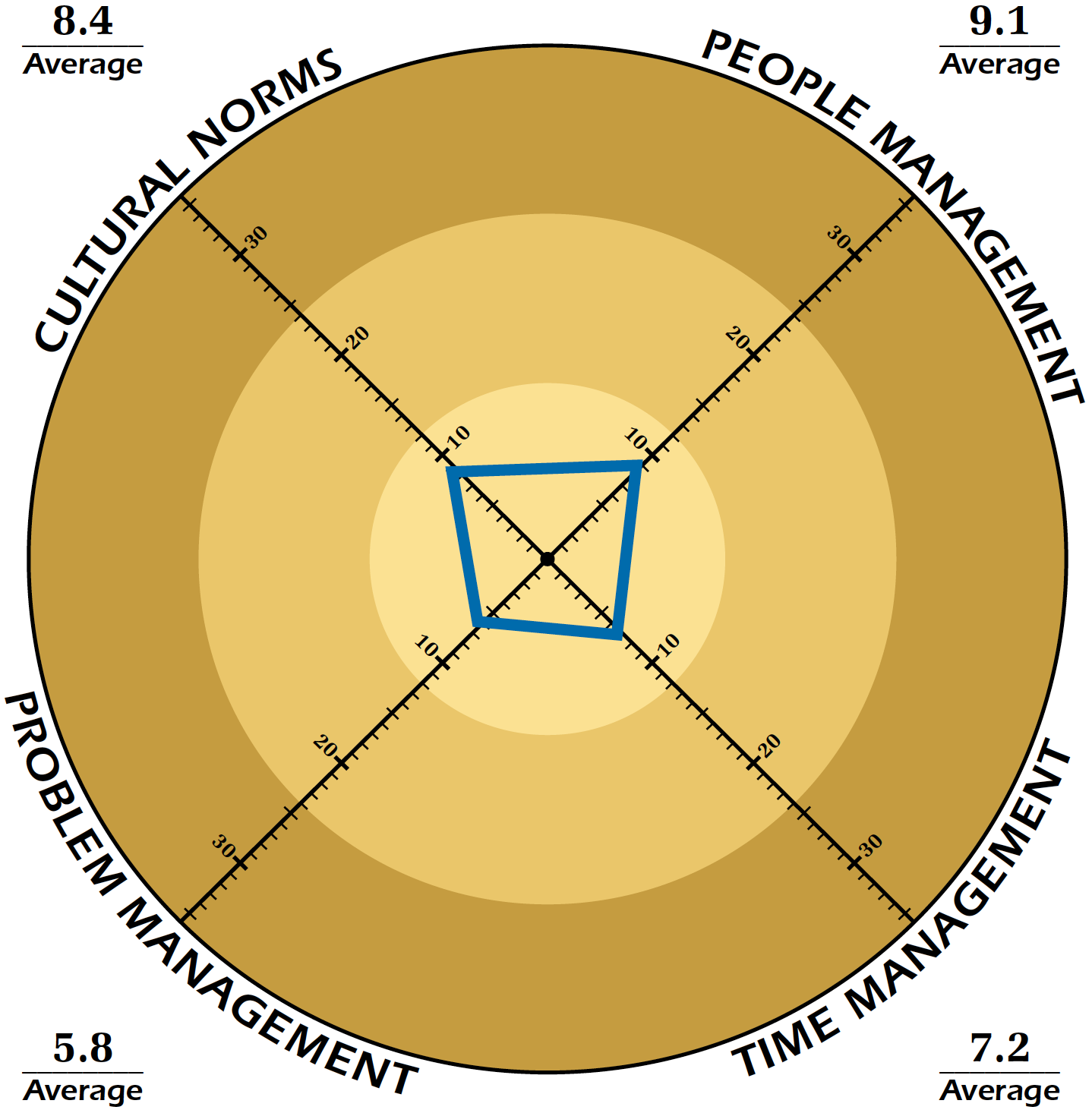
About this Survey
This survey looks at the differences between actual and desired behavior in four key areas: cultural norms, people management, problem management, and time management. If any of these four team-gaps are significant, members can then take the steps to close these gaps.
Click here to see: Sample Results and Interpretive Materials.
ASSESSING ACTUAL VERSUS DESIRED
GROUP FUNCTIONING


The members of any work group have a great deal of knowledge and experience. But the crucial question is: Will all this available talent in the group be used to manage business, technical, and organizational problems or will the expertise and information be wasted?
This survey allows your work group to identify what might be getting in the way of its daily functioning. Part 1 of the survey asks all members to indicate the actual functioning of their group. Part 2 asks all members to indicate the desired functioning of their group. The difference between the actual and desired is defined as a team-gap, which can be significant for one or more of these four gaps:
1. Cultural Norms include all the behavior in a group that encourages—or discourages—adapting to today’s complex and dynamic world, helping one another to change and improve (by giving positive and negative feedback to one another), continually learning new ideas and trying new ways of doing things, constantly striving to improve performance, and trusting other work groups and departments in the organization (including top management). A team-gap in Cultural Norms suggests that the actual functioning of the group on these “unwritten rules of behavior” is different from what is desired.
2. People Management includes all the behavior in a work group that encourages—or discourages—appreciating differences among group members (including differences in personality, motivation, and performance), keeping members informed about all the things that affect them (via the boss), respecting others’ egos and nurturing self-esteem, freely sharing ideas and opinions during group meetings (with no fear of ridicule or criticism), and communicating nondefensively. A team-gap in People Management indicates that the actual interpersonal interactions among group members are at odds with what is desired.
3. Problem Management includes all the behavior that encourages—or discourages—clarifying the group’s goals and objectives, involving other people and work groups that have relevant information and expertise to solve problems, defining problems before taking action, analyzing assumptions when problems are complex (or are recurring), examining problems in an open and thorough manner (via the boss), and taking responsibility for decisions and actions. A team-gap in Problem Management indicates that the group’s actual approach to addressing its problems is different from what is desired.
4. Time Management includes all the behavior in the work group that encourages—or discourages—clarifying and adjusting job priorities, planning how projects and activities will be coordinated, planning and organizing work group meetings and group discussions, setting the proper example for time management (via the boss), gaining the contribution of the quieter members in the group, and analyzing and improving group processes. A team-gap in Time Management suggests that the group’s actual use of its time is different from its desired use.
Once a work group (or department) has surveyed its team-gaps, taking special note of any team-gaps that are significant (or highly significant), it is in the best position to close its gaps. First the group should discuss what impact its significant team-gaps are having on its daily functioning. Next the group should examine the root causes of these team-gaps: How did these barriers to success come into being and what keeps them alive? Then the group should derive alternative solutions for closing its team-gaps, pick one or more solutions, and develop action plans to implement the chosen solutions. Finally, the group must implement its action plans and carefully monitor the results of its efforts.
After several months of working to close its identified team-gaps, the work group can use the Team-Gap Survey again to assess the results of its efforts. Having each group member respond to the survey a second time will provide a sound basis for noting which team-gaps have been closed (have become insignificant) and which ones need more attention.
WHY TAKE THIS SURVEY?
It’s so easy for any group to continue with habitual behaviors, even when its members are privately dissatisfied with their group’s functioning. The Team-Gap Survey presents four key topics that shape group and organizational success: managing a group’s cultural norms, people, problems, and time. Taking this survey and then discussing the results brings these four topics out into the open, so the group can then use the steps of problem management to close its most stubborn team-gaps. This survey is relevant to these OCCUPATIONAL IDENTITIES:
Purchase the
Paper Booklet
The price of the 46-page Team-Gap Survey is $19.95 per person. It takes only twenty minutes to complete and another ten minutes or so to graph the Team-Gap Profile of a work group of five to fifteen members. Graphs are also provided to display the Team-Gap Profiles of departments and the entire organization.
Purchase the Team-Gap Survey
Work sheets
Based on Kilmanns Team-Gap Survey, these work sheets help members identify the largest gaps in their work group in four key areas: Cultural Norms, People Management, Problem Management, and Time Management. Once the largest team-gaps have been identified, group members use the five steps of problem management (sensing problems, defining problems, deriving solutions, implementing solutions, and evaluating outcomes) to close these gaps. Members are also asked to use an informal sanctioning system in order to help one another switch from their old behavior patterns to more desirable ones. After a little time (between three and six months), members can retake the survey and then use the additional work sheets to close their most stubborn, troublesome team-gaps.
DISCOVER THE FULL
POTENTIAL OF THE
TEAM-GAP SURVEY
During our 4-hour course, you’ll learn how to interpret Team-Gap Profiles, which will allow group members to become more aware of how they’ve been getting in the way of their own group functioning. But after discussing their team-gap results, members can use the five steps of problem management to close their most stubborn gaps.












